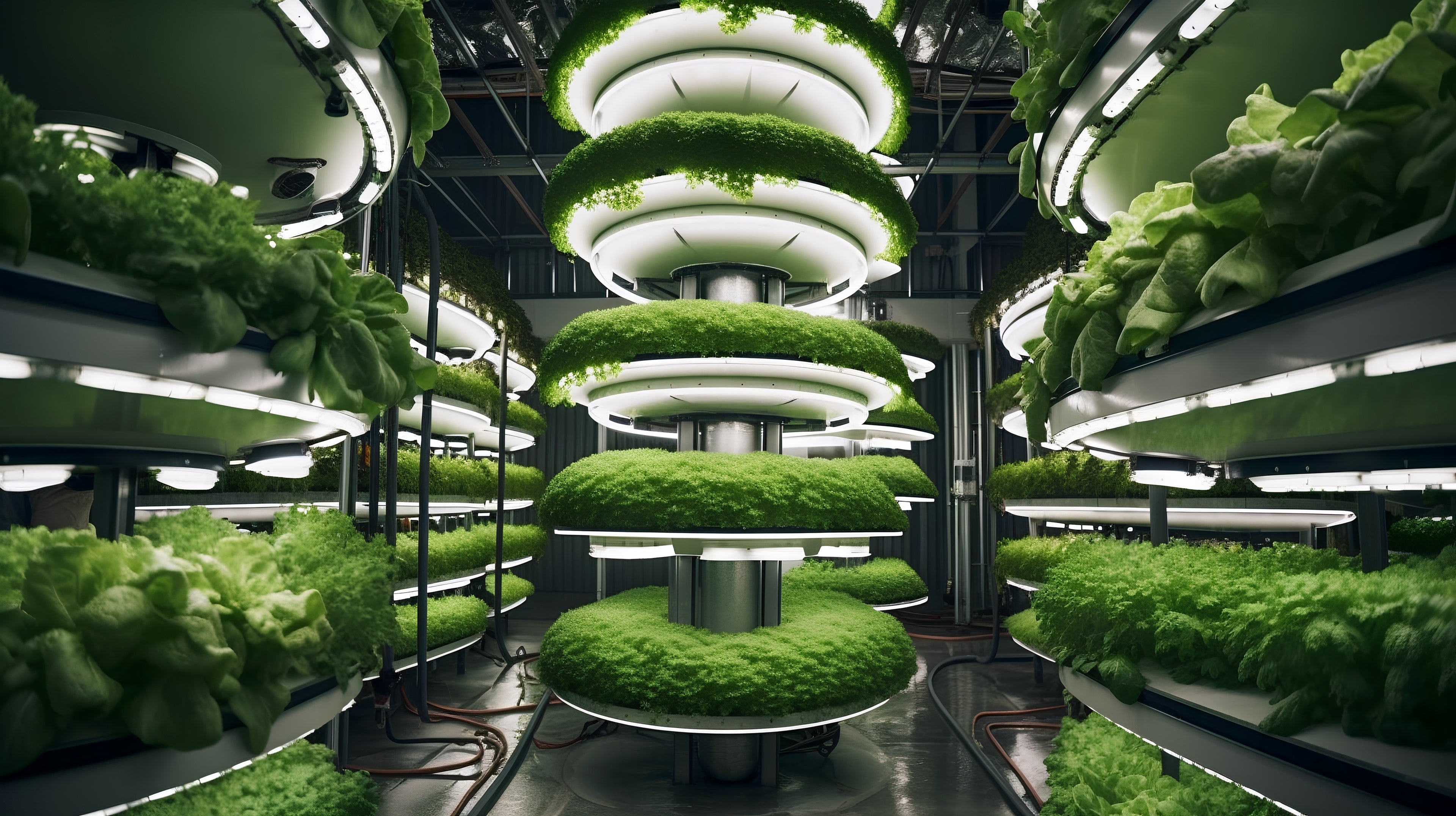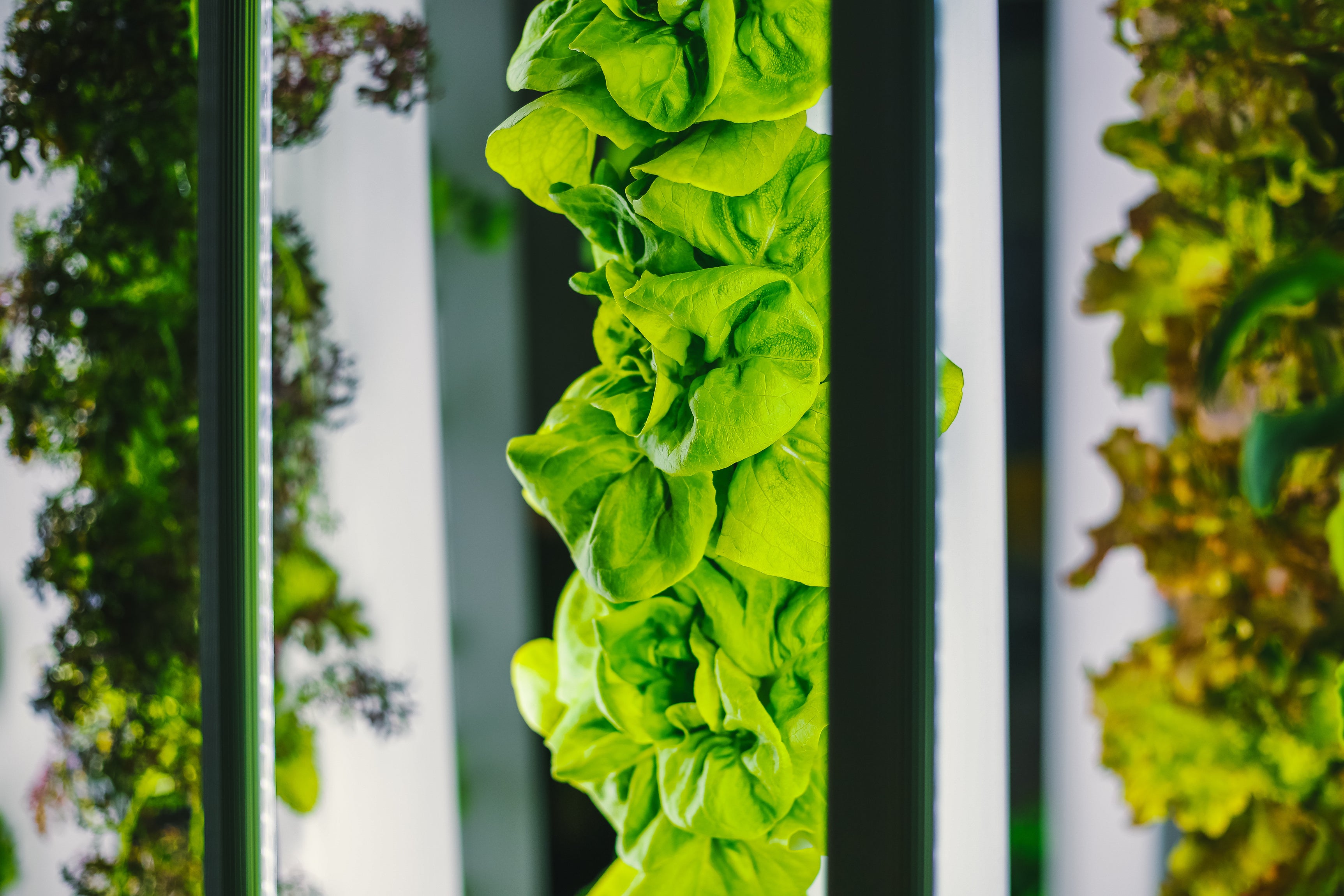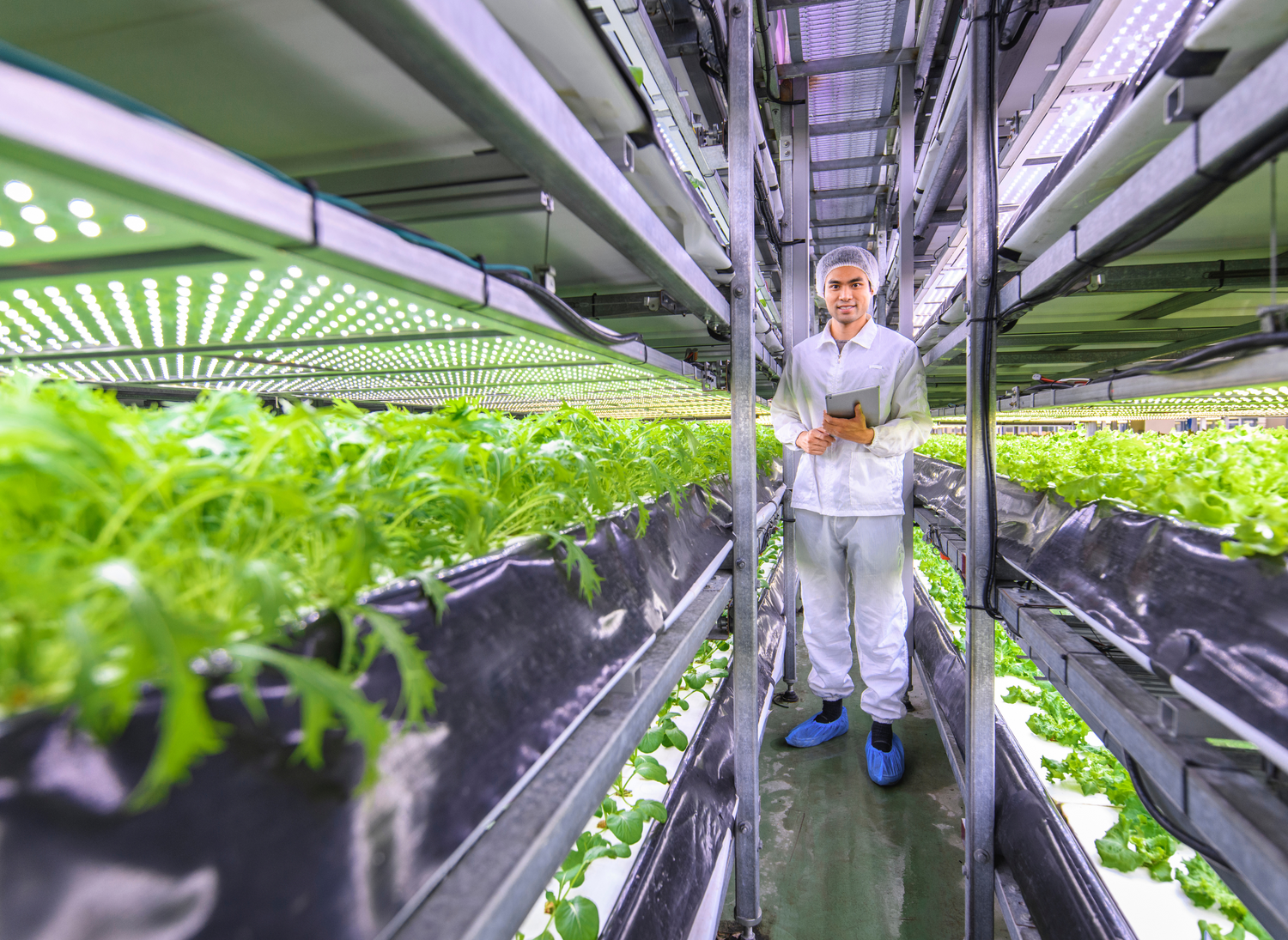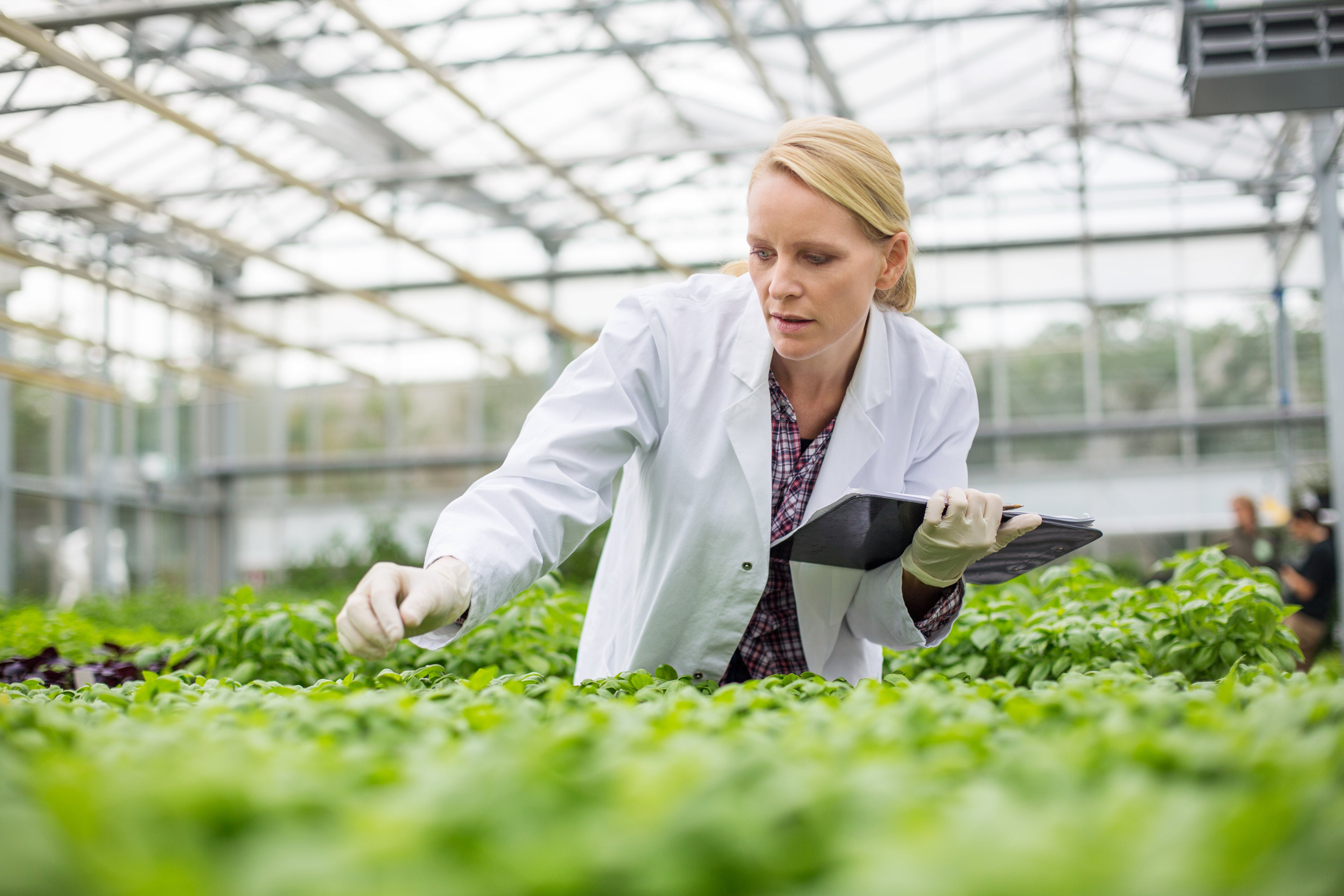
Vertical Farming: Technologies, Advantages, Future
02/15/2024 - Pia from greeny+
Vertical farming is more than just a passing trend - it represents a real revolution. This innovative method goes beyond traditional land cultivation and provides effective solutions to the complex challenges of an expanding global population.
This article will give you a comprehensive overview of the topic of vertical farming.
-
The essentials in brief:
- Vertical farming refers to cultivation on multiple levels; this can be done both in greenhouses and without direct sunlight.
- The cultivation method is characterized by environmentally friendly practices, efficient use of land and innovative technologies.
- Despite challenges, companies are increasingly engaging in vertical farming, which offers promising future prospects for sustainable food production.

What is vertical farming?
Vertical farming, also known as “vertical farming,” represents a modern technology that is revolutionizing traditional farming practices and is also often associated with terms such as indoor farming, urban farming, indoor farms and controlled environment farming .
The term vertical farming is made up of two parts: “Farm,” which refers to an agricultural operation used to grow crops economically, and “Farming,” which describes the business activity of cultivating crops. Together they define vertical farming as an economical, vertical cultivation of plants .
Vertical farming refers to any form of cultivation that takes place on multiple levels . The use of the latest technologies enables maximum production in a minimum of space , with cultivation not taking place horizontally in endless fields, but vertically in several levels one above the other. This often happens in specially designed buildings or containers in which all environmental conditions such as light, climate and nutrient supply can be precisely controlled.
So the key to this concept is the efficient use of available space , stacking plants in structured systems such as shelves.
A central feature of vertical farming is the innovative approach to plant growth, which does not take place in conventional fields, but in a special nutrient mixture. This mixture is usually provided by hydroponics (water-based) or aeroponics (air-based) . These advanced farming methods offer the unique ability to precisely control nutrient supply , ensuring plants receive exactly the nutrients they need. This control results in an accelerated and extremely efficient plant growth rate.
Good to know: This type of cultivation can be used both in greenhouses using sunlight and independently of direct sunlight. The second variant is often referred to as “indoor farming” .
Five benefits of vertical farming
Vertical farming offers a number of advantages. In the following sections, we highlight five of the most significant benefits of this innovative growing method.
Collapsible content
1. Efficient use of resources
The application methods of vertical farming enable significantly more efficient use of resources such as water, fertilizer and energy. This results primarily from the integration of highly efficient irrigation systems that establish an effective water cycle and thus offer the possibility of using water multiple times.
2. Year-round food production – control over the growing climate
Nature and climate change do not accept compromises, but vertical farming offers the opportunity to change this by decoupling the plants' growth process from external climate influences . Technical systems enable precise control of all relevant parameters such as lighting, temperature and irrigation. This careful monitoring creates optimal conditions for plant growth. This control allows year-round production and multiple harvests per year.
3. Efficient use of space
One of the main advantages of vertical farms is the efficient use of space, as this farming method uses floors on top of each other in buildings such as high-rises, halls or containers, which allows for significant space savings compared to conventional agricultural use.
4. Freshly harvested thanks to short transport routes
The path from cultivation to consumption is extremely short with vertical farms because the plants literally grow on your doorstep. This short transport route not only means fresher products, but also fewer emissions . It also helps bring agriculture closer to the consumer. This proximity not only offers logistical advantages , but also promotes a more conscious connection between producers and consumers.
5. Reduction of pesticides and herbicides
In closed environments , plants can be better protected from pests and diseases . This often results in fewer pesticides and herbicides being needed, which in turn is more environmentally friendly.
Innovations in technology
For vertical farms, which are often operated indoors, lighting plays a crucial role. The targeted use of special LED lamps, often supplemented by natural light, creates an effective light spectrum. LED lamps imitate the sunlight spectrum and thus ensure sufficient energy for plants' photosynthesis, regardless of the external lighting conditions.

Smart sensors and automated systems constantly monitor conditions and control water supply, nutrient supply and other parameters. This reduces manual effort many times over and optimizes resource utilization.
Soil-free methods such as hydroponics, aquaponics and aeroponics are used to grow crops vertically. All three methods provide the plants with a nutrient solution - i.e. water and nutrients dissolved in it. Let’s take a closer look at these three forms of vertical farms below:
-
Hydroponic Farming
Hydroponic farming is a form of vertical farming in which plants are grown without soil in a water-filled environment . The plants are supplied with dissolved nutrients in the water. What makes this method so unique is that the water used flows back into the cycle and is reused. This saves a significant amount of water compared to traditional farming. -
Aquaponics farming
Aquaponics farming, on the other hand, goes one step further and combines aquaculture with hydroponics. Not only plants but also fish are bred in the same facility. Excrement from fish farming serves as nutrients for the plants. -
Aeroponics Farming
In the aeroponic farming method , the roots of the plants hang in the air and are regularly watered with water and a nutrient mixture at a regular interval .
Challenges of vertical farming
Despite the numerous advantages that vertical farming offers, there are also some challenges to overcome. Three of the most significant of these challenges are explained in more detail below.
High investment costs
Setting up a vertical farm typically requires significant financial investments. Since vertical farms are located in urban areas, urban land prices play a large role. Combined with the need for specialized technology and materials, the initial investment is often enormous. High investments and continually rising operating costs make it difficult, especially for start-ups, to gain a foothold in this area.

power consumption
Operating vertical farms requires a continuous supply of energy for lighting, climate control and other automated systems. The associated energy consumption can be challenging depending on the technologies and sources.
Challenges in integrating with existing farming systems
In rural areas, the transition to vertical farming could threaten people's livelihoods, especially since many people in these areas rely heavily on conventional farming practices. A sudden full shift to vertical farming could pose significant challenges for many conventional farms.
Although vertical farming brings with it the creation of new jobs, it is particularly important to give farmers the opportunity to actively participate in this change through retraining or conversion. Because the introduction of vertical farming is a complex process that usually requires the expertise of qualified professionals to successfully implement the system . Because these systems are often based on hydroponic methods, different factors must be taken into account than with conventional farming practices.
Despite these and other challenges, vertical farming continues to be researched and developed to create more sustainable and efficient solutions for future food production.

Vertical farming companies
The emerging field of vertical farming is home to numerous companies engaged in innovation and advanced technologies. Your contribution is essential to offer high-quality, fresh and healthy food both in Europe and worldwide.
-
The largest vertical farm in the world
A fascinating example of the impressive possibilities of vertical farming is CropOne's second farm in Dubai . This covers an area of 330,000 square meters and is currently considered the largest vertical farm in the world. This agricultural complex produces a staggering amount of over 900,000 kilograms of vegetables annually. *
Such a scale of vertical farming not only represents a milestone in the industry, but also highlights the enormous potential of this innovative farming method for the sustainable and efficient production of food.
Future prospects of vertical farming
Looking to the future, there is evidence to suggest that vertical farming can be not just a trend, but a serious solution to many of the challenges we face in terms of food production. The advantages of this type of agriculture are diverse and can be derived from various factors.
-
Job and research opportunities
First of all, the rise of vertical farming in engineering, biochemistry, biotechnology, construction and maintenance clearly shows that this type of farming is creating new jobs and research opportunities . -
Urban development and food prices
Another perspective arises with regard to urban development. Vertical farming can reduce vacancies in cities while promoting sustainable, local food production . Improved productivity within these farms and reduced transportation costs could also lead to lower food prices in the future. -
Political and environmental benefits
Decision-makers have the opportunity to achieve climate goals through targeted measures while ensuring the safety of our food. Improving food security goes hand in hand with a reduction in imports, leading to more sustainable and self-sufficient supplies.Despite promising approaches, it should be noted that vertical farming, while a promising concept, still faces challenges that need to be overcome.

Vertical Farming - The beginning of a green revolution
The benefits of vertical farming extend from environmentally friendly practices, efficient land use to innovative technologies. This establishes it as a groundbreaking method that revolutionizes the conventional approach to growing and consuming food. Despite one or two challenges, companies and farms committed to this concept are seeing an increasing presence. This is where environmental awareness and technology merge to create a groundbreaking solution - the future of vertical farming looks promising.
Also interesting:
View all-
Smart Garden – Die Zukunft mit Hydroponik
Einführung in das Konzept Smart Garden Was ist ein Smart Garden? Ein Smart Garden kombiniert innovative Technologien mit Gartenbau. Das Ziel sind optimale Bedingungen für das Pflanzenwachstum bei automatischer Steuerung....
Smart Garden – Die Zukunft mit Hydroponik
Einführung in das Konzept Smart Garden Was ist ein Smart Garden? Ein Smart Garden kombiniert innovative Technologien mit Gartenbau. Das Ziel sind optimale Bedingungen für das Pflanzenwachstum bei automatischer Steuerung....
-
Hydroponik mit Drip-Systemen einfach erklärt
Du möchtest nachhaltig und effizient gärtnern, aber möglichst wenig Aufwand haben? Dann könnte das hydroponische Drip-System (Tröpfchenbewässerung) genau richtig für dich sein. In diesem Artikel erfährst du mehr übers Drip-System. ...
Hydroponik mit Drip-Systemen einfach erklärt
Du möchtest nachhaltig und effizient gärtnern, aber möglichst wenig Aufwand haben? Dann könnte das hydroponische Drip-System (Tröpfchenbewässerung) genau richtig für dich sein. In diesem Artikel erfährst du mehr übers Drip-System. ...
-
Entdecke das DFT-System (Deep Flow Technique) -...
Was unter der Bezeichnung Hydroponik bekannt ist, eröffnet Dir eine spannende Welt, in der Pflanzen ohne Erde gedeihen – nachhaltig, effizient und platzsparend. Das sogenannte DFT-System (Deep Flow Technique) ist eine...
Entdecke das DFT-System (Deep Flow Technique) -...
Was unter der Bezeichnung Hydroponik bekannt ist, eröffnet Dir eine spannende Welt, in der Pflanzen ohne Erde gedeihen – nachhaltig, effizient und platzsparend. Das sogenannte DFT-System (Deep Flow Technique) ist eine...

